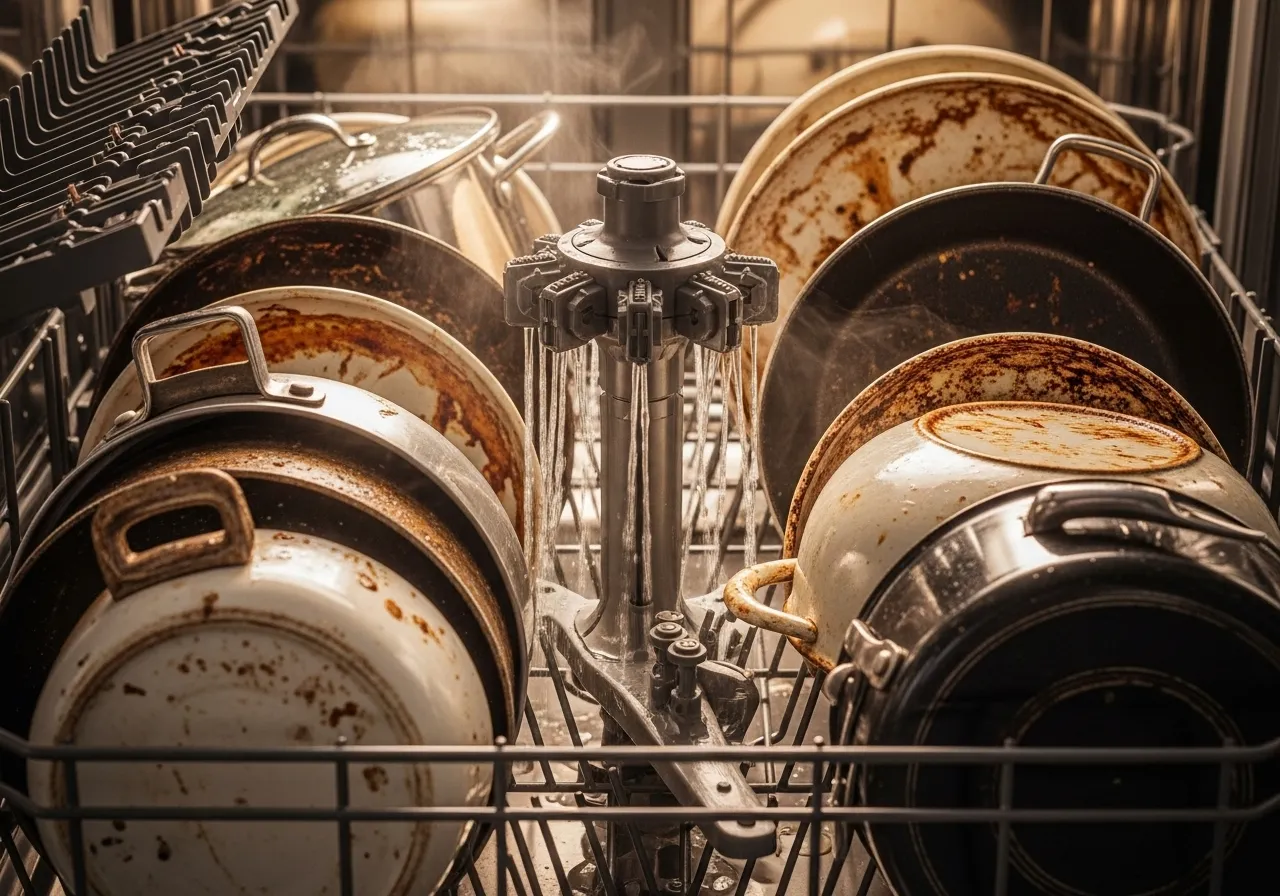
Step 2: Conquering the Bottom Rack – The Power Zone
The bottom rack is the workhorse section of your dishwasher. It’s positioned directly above the main, most powerful spray arm, making it the ideal location for your largest and dirtiest items. Loading this section correctly is all about stability and strategic placement to maximize exposure to that powerful upward spray.
What Goes Here
Reserve the bottom rack for your most durable and heavily soiled items. This includes dinner plates, large bowls, pots, pans, casserole dishes, and large serving platters. These items can withstand the full force of the water jets and the higher heat from the exposed heating element located at the bottom of many dishwasher tubs.
Plates and Platters
The fundamental rule for plates is to face them toward the center. The tines on the rack are designed to hold them upright and separated. Place larger dinner plates in the back and smaller salad plates in the front, or as your rack’s tine layout suggests. Always load them in a single row per set of tines, ensuring that the soiled surface of each plate is angled inward and slightly downward toward the spray arm. Never overlap plates, as this creates a perfect barrier against the water spray. A good rule of thumb is to leave at least a finger’s width of space between each item.
Bowls
Large soup or cereal bowls also belong on the bottom rack. The best way to load them is to place them between the tines, angled with the dirty interior surface facing down and toward the center of the rack. This orientation allows the high-pressure spray to get directly inside the bowl and lets water drain out completely, preventing pooling.
Pots, Pans, and Casserole Dishes
These bulky items require the most strategic placement. Place them along the sides, back, or in the corners of the rack. Their soiled surfaces should be angled down toward the spray arm. Placing a large pot in the very center of the rack is a common mistake, as it can act like a giant umbrella, blocking water from reaching dozens of other dishes. By keeping them to the periphery, you ensure everything gets a share of the cleaning power. For very stubborn, baked-on food, some dishwashers have targeted high-intensity spray zones, often in a back corner. Consult your appliance manual to see if your model has this feature.
Safety and Function Check: Before you slide the rack in, make sure no tall platters, panhandles, or utensils are sticking up so high that they will block the rotation of the middle spray arm above it. Give the middle arm a gentle manual spin with your hand. If it hits anything, rearrange the items on the bottom rack until it can spin a full 360 degrees freely.
Mini-Example: Loading After a Spaghetti Dinner
Let’s apply these principles to a common scenario. Your meal included spaghetti, marinara sauce, a large salad, and bread. Your dirty dishes consist of four dinner plates, four salad bowls, a large stockpot used for the pasta, and a glass salad bowl.
First, scrape any leftover spaghetti and sauce into the trash. Place the four dinner plates in the tines in the back half of the rack, with their soiled surfaces facing the center. Place the large, heavy stockpot in the back-left corner, on its side with the dirty interior angled down and toward the spray arm. The glass salad bowl can go in the front-right section, also angled down and inward. The four smaller salad bowls can be nested between the tines in the remaining space, each angled downward. This arrangement ensures nothing is blocking anything else and every item has a direct line of sight to the powerful lower spray arm.

















